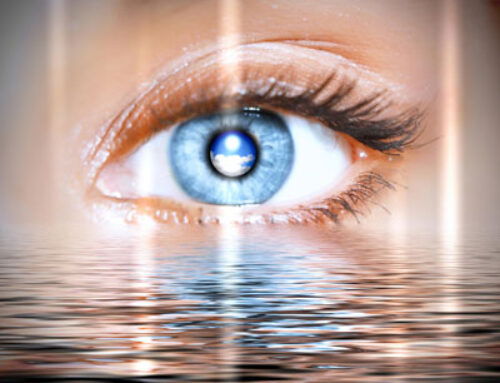 Recently Ricardo stepped out of Jellyfish Have Eyes looking for tell-tale signs that his troubles with science in the mid- 21st century were sinister developments of earlier times. As he suspected, he found an article in The Washington Post that he believed foreshadowed the demise of ivory-towered basic research.
Recently Ricardo stepped out of Jellyfish Have Eyes looking for tell-tale signs that his troubles with science in the mid- 21st century were sinister developments of earlier times. As he suspected, he found an article in The Washington Post that he believed foreshadowed the demise of ivory-towered basic research.
I remember that he looked depressed when he returned to the novel, muttering, “Why would the government or any organization expect scientists to be creative and make discoveries, and at the same time tell them what they should work on? Creativity requires searching for new opportunities, not developing what’s known, although that needs to be done too of course.”
Ricardo’s a great guy and I love him despite his faults, and he has quite a few (don’t we all?), including excessive pride mixed with a tinge of arrogance. Never mind, this short blog isn’t a therapy session. I’m beginning to realize that authors love their characters, flawed or not, so if Ricardo’s depressed, I’m depressed.
But there’s another side of Ricardo: the eternal optimist with far-reaching ideas. He bows to curiosity and is always hopeful. He doesn’t judge intelligence by the ability to discern faults, like so many people do. He inspires rather than cautions, he supports rather than criticizes. Everything has problems and its naysayers, but Ricardo sniffs the positive. I guess that makes him more liable to mistakes, but as they say, nothing ventured, nothing gained. So what if that’s a cliché? It’s also true.
I wonder whether Ricardo found anything positive or uplifting when he poked around outside of the novel the other day. I’ll try to find out by sneaking into Jellyfish Have Eyes to eavesdrop on him. If he can get out of the book, there’s no reason that I can’t get into the novel.
There he is, having lunch with Benjamin at the Silver Diner. Let’s listen in.
“Honestly, Benjamin, if you had observed my cat Mulligan and all the games he played, you would agree that there was a lot going on in his brain. All these years have passed, and I still want to know what Mulligan thought about. Consciousness, abstract thought, memory, all those remarkable brain functions, couldn’t have evolved directly from nothing to man, or even from nothing to non-human mammals.”
I agree. Ricardo’s not the only one who wanted to experience what it’s like to be an animal. I heard on a radio discussion the other day that Oliver Sacks also wanted to experience what it would be like to be an animal. What an interesting person he was!
“Maybe primates, or dogs, or a cat like your Mulligan, have some limited type of self consciousness or ability for abstract thought. I agree that there are signs that these mammals are more sophisticated than we give them credit for. But invertebrates? Come on, Ricardo. I think your research on jellyfish was bold – even courageous – in the political climate of the time. But I can’t agree that an invertebrate – a worm or clam or your beloved jellyfish – has any awareness, or anything like a mind. There’s a limit to story-telling in science. Science is not a novel, Ricardo.”
But there’s another side of Ricardo: the eternal optimist with far-reaching ideas. He bows to curiosity and is always hopeful.
“It’s wild, I know, but I’m sticking to my ideas. Don’t short-change invertebrates because you can’t understand them! Want to hear about an article I read in The New York Times when I hopped out of these pages and was in Bethesda?”
“Sure.”
So do I. This is great, eavesdropping on these guys. Now I’m getting the real scoop.
“What would you say if I told you that crayfish, you know, small lobster-like crustaceans, can suffer from anxiety like we do?”
“I’d say you’ve been drinking too much, and I don’t mean water.”
“Okay, you’re right. That would be a not so-brilliant idea for a grant rejection. But according to this article I read, a couple of French scientists, Pascal Fossat and Daniel Cattaert, found that when they gave crayfish a mild electric shock in an aquarium, they stopped venturing from dark corners into brightly lit areas. Maybe they were looking for food. I don’t know, but they generally roamed around the aquarium on a regular basis. I ask you: why did these shocked, so-called mindless creatures – we know they have a structural brain – refuse to get out of the dark areas after the shock?”
“I don’t know.”
“Anyway, when the scientists injected the crayfish with a precursor to Valium called Librium, which is used to treat anxiety in people, the shocked crayfish started roaming around the bright spots again. Isn’t that amazing!! Also, they said that serotonin levels went up in the “scared” crayfish, and even injecting serotonin into crayfish made them behave anxiously, and a serotonin inhibitor “cured” them, that is they started wandering about in the light again. My god! Look it up online.
“I’m not saying that crayfish need psychoanalysis, but let’s face it, something interesting is going on that we don’t understand. Maybe, just maybe, there’s some kind of “inner life” in these invertebrates that’s worth studying. Is that a novel, or interesting science?”
“Both?”
“Both. Maybe that’s right, Benjamin. But what do you think about these crayfish? Doesn’t it sound like they remember the shocks and are anxious about it? Like maybe they have some kind of mind?”
“Well, I’m impressed and don’t know what to think. I’m not sure it matters what I think. I’d rather know what crayfish think.”
I just jumped out of Jellyfish Have Eyes and Googled the article to make sure Ricardo got it right. He did. And Benjamin was right too: it’s what’s in the mind of the crayfish that’s interesting, not what’s in his mind. Cattaert, who did the work, agrees. He said, “It’s difficult to know what thinks the crayfish.”






The swimming anloagy is also perfect for retirement planning. Most people get tripped up on this because of the time factor. They figure they have decades to plan and fund retirement so they use the go-slow approach, especially if they’re young. You could probably establish a comfortable retirement plan in as little as 10 years if you threw all your resources into doing it. Then you could sit back and enjoy the rest of your life, knowing that you have a fat nest egg waiting for you at the end of your work life. How might that free you up to do other things you might want to do???